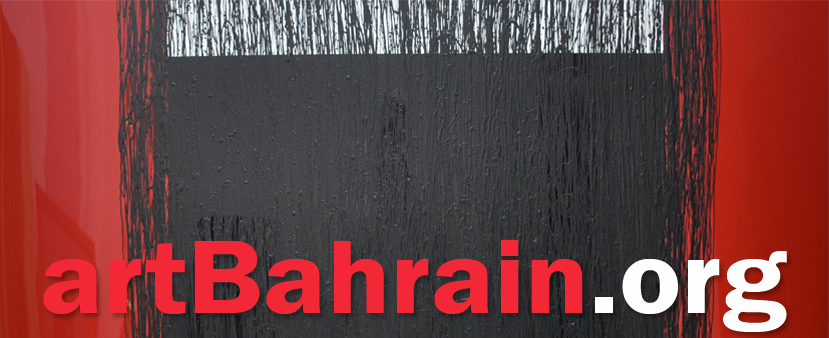

ST PETERSBURG - June
ArtGuide - Museum
Join artBahrain.org
About The State Hermitage Museum

June 2011



ROADS OF ARABIA
ARCHAEOLOGICAL TREASURES OF
SAUDI ARABIA
ARCHAEOLOGICAL TREASURES OF
SAUDI ARABIA
The State Hermitage Museum,
St Petersburg - until 4 September
St Petersburg - until 4 September

Anthropomorphic stele
4th millennium B.C.
ST PETERSBURG. On 17th of May 2011 the new exhibition “Roads of Arabia. Archaeological treasures of Saudi Arabia” is to be opened at The State Hermitage Museum. More than 300 unique archaeological items found in Arabia in the latest century are gathered into a sensational exposition. Exhibits from different museums of Saudi Arabia including the ceramics, coins, jewelry, colossal burial statues, reflect the long history of Arabia since the paleolith to nowadays.
The exhibition consists of 7 sections: 5 of them present the items of the pre-Islamic period, and the latest 2 are devoted to the coming of Islam and the sacral cities - Mecca and Medine, and the appearance of the Kingdom of Saudi Arabia.
The main subject of the exhibition is the roads - the roads of pilgrims, strangers and merchants, crossing the country and connecting its parts. In the prehistorical period one of the main ways of the ancient settlements crossed Arabia, going from Eastern Africa to Eurasia. In the historical period the Arabian kingdoms and states were fastly growing and developing in the neighborhood with the famous ancient civilizations. The exhibition shows the well connections with Egypt and Mesopotamia, with the Middle-east countries, later - with the Antique world, more later - with the Muslim world.
Merchant roads crossed Arabia by all sides: from South to North, from West to East. The caravans with the exotic goods were moving from South Arabia to the Mediterranean and Asia. The oases standing on the main merchant ways, became the big international trade centers, where the famous kingdoms, well-known even from the Bible, appeared: Tayma, Madyan, Najran, Nabatea.
More than 10 different languages were spoken in ancient Arabia. The permanent moving through the roads made the contacts between the different Arabian tribes more close: step by step it mixed the languages, traditions and religions. Furthermore it became the reason of the fast spread of Islam, coming from Hijaz at the west of Arabia in the beginning of the 7th century. In the Islamic period the merchant routes became the pilgrim ways the all the Islamic sacred objects in Mecca and Medine. More than a thousand years later the political unification of the country under the Al Saudi dynasty’s regency went on the same roads.
The main part of the exhibits was explored and researched in the latest 40 years. In the beginning of 1970-s the Saudi Commission for tourism and antiquities made a program of researching the archeological areas in six regions of Saudi Arabia: Eastern, North-Eastern, Northern, Western, South-Western and Central. The results of the program are presented at the exhibition in the Hermitage. Its opening is to be possible owing to the long-term efforts of the archaeologists and the historians of the world, and it can be a wonderful example of the international museum collaboration.
The curator of the exhibition from the Hermitage is Ms. Nathalia Kozlova, the Head of the Eastern department of The State Hermitage Museum.
The exhibition catalogue in Russian language under the redaction of the Director of the Hermitage, Dr. Mikhail Piotrovsky, is published by The State Hermitage Museum publishers.
The exhibition consists of 7 sections: 5 of them present the items of the pre-Islamic period, and the latest 2 are devoted to the coming of Islam and the sacral cities - Mecca and Medine, and the appearance of the Kingdom of Saudi Arabia.
The main subject of the exhibition is the roads - the roads of pilgrims, strangers and merchants, crossing the country and connecting its parts. In the prehistorical period one of the main ways of the ancient settlements crossed Arabia, going from Eastern Africa to Eurasia. In the historical period the Arabian kingdoms and states were fastly growing and developing in the neighborhood with the famous ancient civilizations. The exhibition shows the well connections with Egypt and Mesopotamia, with the Middle-east countries, later - with the Antique world, more later - with the Muslim world.
Merchant roads crossed Arabia by all sides: from South to North, from West to East. The caravans with the exotic goods were moving from South Arabia to the Mediterranean and Asia. The oases standing on the main merchant ways, became the big international trade centers, where the famous kingdoms, well-known even from the Bible, appeared: Tayma, Madyan, Najran, Nabatea.
More than 10 different languages were spoken in ancient Arabia. The permanent moving through the roads made the contacts between the different Arabian tribes more close: step by step it mixed the languages, traditions and religions. Furthermore it became the reason of the fast spread of Islam, coming from Hijaz at the west of Arabia in the beginning of the 7th century. In the Islamic period the merchant routes became the pilgrim ways the all the Islamic sacred objects in Mecca and Medine. More than a thousand years later the political unification of the country under the Al Saudi dynasty’s regency went on the same roads.
The main part of the exhibits was explored and researched in the latest 40 years. In the beginning of 1970-s the Saudi Commission for tourism and antiquities made a program of researching the archeological areas in six regions of Saudi Arabia: Eastern, North-Eastern, Northern, Western, South-Western and Central. The results of the program are presented at the exhibition in the Hermitage. Its opening is to be possible owing to the long-term efforts of the archaeologists and the historians of the world, and it can be a wonderful example of the international museum collaboration.
The curator of the exhibition from the Hermitage is Ms. Nathalia Kozlova, the Head of the Eastern department of The State Hermitage Museum.
The exhibition catalogue in Russian language under the redaction of the Director of the Hermitage, Dr. Mikhail Piotrovsky, is published by The State Hermitage Museum publishers.

Fragment of the wall-painting depicting the male head
1st-2nd centuries A.D.

Fragment of the statue: Head of Governor of Lihian Dynasty
4th-2nd centuries B.C.
artBahrain Online Gallery
...where unseen masterpieces is just a click away!
Copyright © 2010, artBahrain.org. All rights reserved. Use of this site constitutes agreement with our Terms and Conditions.
- ArtGuide
- Art Fair
- Galleries/Museums
- Artists' Opportunities
- Awards
- Venice Biennale
- Archives

